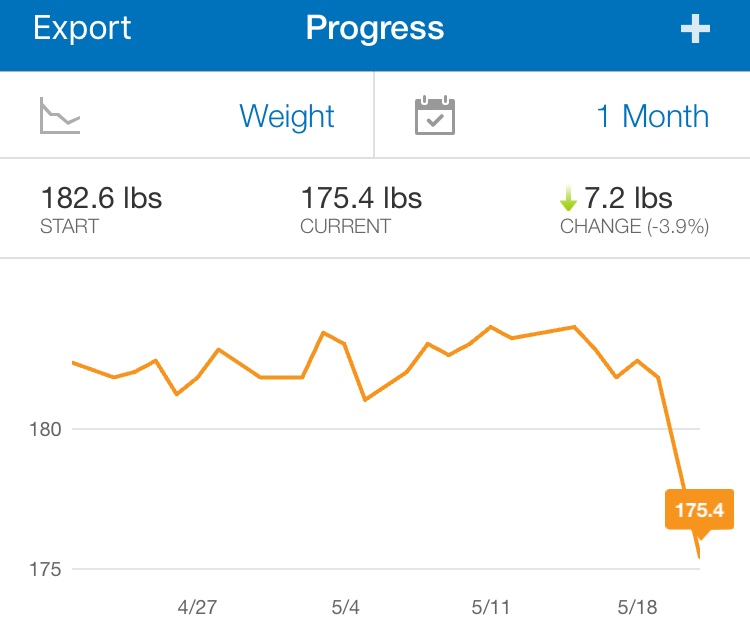
Recently, I completed a 6-month strength macrocycle where I made significant improvements in all three of the main lifts — squat, bench press, and deadlift. I explained that entire process in detail in a previous article.
As that program came to an end, my calories had risen to accompany and account for the intensity and volume of training. I more or less linearly progressed in intensity over time, with my volume undulating on a weekly basis.
That’s all a bunch of technical language to essentially say, “as time went on, I lifted heavier weight.”
My calories rose to approximately 3,000 a day (375 carb, 85 fat, 185 protein), which for me starts dipping into the psychologically difficult range of stuffing my face and feeling full/bloated/etc. all day, every day.
Additionally, my body felt beat up and ready for a break.
The timing seemed perfect to change things up a bit with a mini cut.
But what is a mini cut? What is the purpose of a mini cut? Why would someone give this strategy a try?
Mini Cut, Defined
A mini cut is a drop in both calories and training volume for a period of time (typically around four weeks or so in length). The benefits of a mini cut can come in the form of added rest for your muscles, joints and central nervous system, but the main benefits come in the form of weight management.
The primary purpose of entering into a mini cut is to cut down on water weight and drop as much body fat as possible in a short period of time. This helps keep your body composition under control when in an extended bulk (an extended muscle-building phase).
Mini Cut, Applied
First off, if you’re interested in utilizing a mini cut there are a few questions you need answers to:
- What is your current meal plan? What are your calories/macros in your bulk?
- What is your overall training goal?
- Why do you want to do a mini cut at this time?
Answers to these questions are going to be important. Ideally, you have been bulking for a while — at least 4-6 months in a consistent caloric surplus. By entering into a mini cut, you should still have your long-term goal be focused on building muscle, but you want to take a short break to drop excess and unneeded body weight to keep your body composition in check.
If you don’t have a strategy for your meal plan, it’s going to be difficult to structure a successful mini cut. A strong dieting strategy will allow you to drop calories to a level that makes sense and will still allow you to train and function throughout the duration of the diet.
Normally, this drop in calories is best executed by removing calories from carbohydrates. Some fats can be removed as well if needed/desired. Your protein levels should stay the same, or possibly even rise slightly.
In terms of training, your goals should remain the same. A mini cut is just an abbreviated “stop gap” in terms of gaining weight. Training volume can come down a bit, but in the end your goal shouldn’t change, therefore your training style shouldn’t either.
If you want to diet for much longer than four weeks, you’re not in a mini cut anymore, and we’re having a drastically different conversation.
My Mini Cut
I mentioned above that my calories were in the 3,000 range in the final few weeks of my strength macrocycle. Along the way during that program, I added carbohydrates to my diet as needed. In order to structure my mini cut, I simply removed a lot of those added carbohydrates to drop my calories down into the 2,300 range. I also dropped some fat from my diet as well for the time being.
My new macros for this mini cut are:
- 275 carb
- 65 fat
- 185 protein
I don’t expect these to change. As you can see from the chart above, I’ve seen a steep drop in my weight over the past week. I expect that to level out with less dramatic weight loss for the remaining three weeks or so.
Ideally, I’m not losing a ton of weight. I just want to drop a combination of water weight and body fat to get myself in a more comfortable range.
In terms of training, my intensity has backed off considerably. I’m jumping into another six-month strength block, but the first few months are lower in intensity and focused on hypertrophy, which should allow my body to handle the caloric deficit.
How will this all play out? Well, I’ll let you know as things progress. So far, so good!
—
If you’re interested in learning more about mini cuts, or if you’re interested in learning about how to structure your own meal plan or dieting strategy, feel free to contact me and we can discuss options.
Or, if you’re interested in personalized coaching you can fill out my coaching application form and then we can hop on a call to talk about your goals!
CG





